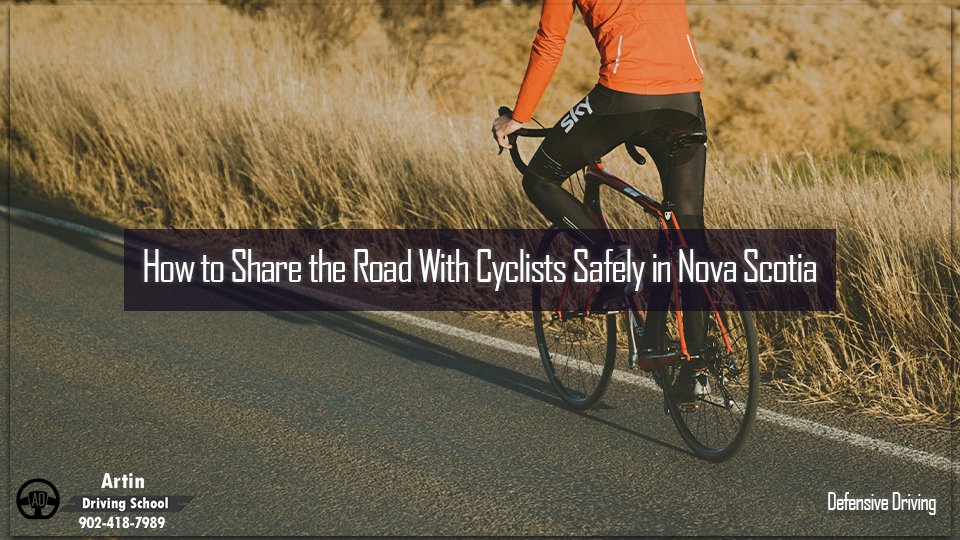How to Share the Road With Cyclists Safely in Nova Scotia
More Nova Scotians are choosing to cycle to work, for exercise, or just to enjoy the outdoors. That means drivers in cities like Halifax and Bedford need to stay alert and understand how to share the road safely with cyclists. Whether you’re cruising down Quinpool or merging onto a rural highway, a bit of awareness can prevent serious injury or worse.
Table of Contents
- Why Sharing the Road Matters in Nova Scotia
- Common Driver Mistakes Around Cyclists
- How to Pass a Cyclist Safely
- Driving Near Cyclists in Cities
- Cyclists on Rural Roads
- Final Thought: Share the Responsibility
Why Sharing the Road Matters in Nova Scotia
Cycling has been growing in popularity throughout Nova Scotia. Municipalities are investing in active transportation infrastructure, but many routes are still shared. A split second misjudgment by a driver can result in devastating consequences for a cyclist.
Nova Scotia’s Motor Vehicle Act requires drivers to give cyclists at least 1 meter of space when passing. But safe driving goes beyond rules, it’s about attitude and awareness in sharing the road.
Common Driver Mistakes Around Cyclists
- Not shoulder checking before turning right: A cyclist may be riding alongside, especially in Halifax bike lanes.
- Opening car doors without checking: This “dooring” issue is dangerous and common in dense areas.
- Passing too closely: Even if you don’t make contact, wind pressure can knock a cyclist off balance.
- Underestimating their speed: Cyclists often move faster than they appear, especially on downhills or e-bikes.
How to Pass a Cyclist Safely
Passing a cyclist requires care. Especially on narrow roads. Here’s how to do it right:
- Change lanes fully if possible. Treat it like passing a slow moving vehicle, ensuring it’s safe to share the road.
- Wait if you can’t pass safely. It’s better to delay by 10 seconds than to cause a serious accident.
- Never honk to warn them. It may startle the cyclist and cause a loss of control.
These techniques are part of what we cover in our defensive driving course. Drivers are responsible for predicting risky interactions and avoiding them.
Driving Near Cyclists in Cities
In Halifax, Dartmouth, and other urban centers, cyclists often share roads with heavy traffic. Some areas have protected bike lanes, others don’t. Stay especially alert in downtown zones, near schools, and intersections where bike traffic may mix with turning vehicles.
Tip: Always shoulder check for cyclists before turning or changing lanes. Don’t rely only on your mirrors. If there’s a painted bike lane, don’t drift into it, not even briefly.
Cyclists on Rural Roads
In areas like Chester or the South Shore, cyclists may be the only other people you see for miles. But the risks remain. With no designated bike lanes, drivers must be extra cautious, especially when it comes to sharing the roads safely.
Tip: Dim your high beams when approaching cyclists at night. Give extra space where the shoulder is soft or gravel. Assume they may need to swerve around potholes or debris.
Final Thought: Share the Responsibility
Safe Nova Scotia driving includes cyclists. Whether you’re on a rural highway or Halifax street, remember: cyclists don’t have airbags. Small changes in your driving can prevent life-altering injuries or worse.
Want to be better informed about how to share the road effectively? Our defensive driving course teaches Nova Scotia specific scenarios that make you a more thoughtful, safer driver.

The information provided on this post is for general informational purposes only and is not intended to serve as professional advice or guidance. While Artin Driving School strives to ensure the accuracy and timeliness of the information shared, Artin Driving School makes no guarantees, warranties, or representations regarding the completeness, reliability, or suitability of any content posted.





